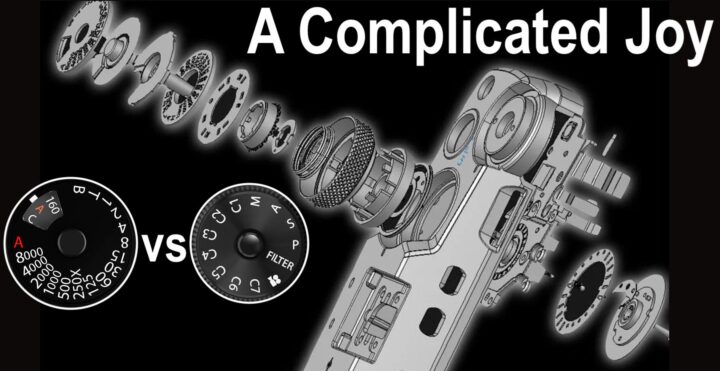Manufacturing Fujifilm’s Best Retro Dial: Complicated, Irrational, Expensive but Pure Photographic Pleasure

The Brilliant Dial – a Complicated Joy
When yesterday we published the comments of Fujifilm CEO, who said that it is very difficult to mass-produce Fujifilm cameras with retro dials, there were some who said that making a retro dial is just as quick and easy as making a PSAM dial.
Is it true?
Well, the CEO was referring to the production struggles of the Fujifilm X100VI, which uses the combined ISO/Shutter dial first introduced on the Fujifilm X-Pro2.
So let’s look at that dial. Is it really as easy as making a PSAM dial? Here is what Fujifilm writes about it:
Realizing the [dial] mechanism and manufacturing process were not easy.
Firstly, […] there are 22 positions in total, quite a lot of number for an internal dial. […]
Secondly, the dial is electronically linked. The analog dial operation is converted digitally to know exactly what the setting is.
And Lastly, this mechanism has to be weather-resistant.
In order to meet the requirement, the Shutter speed / ISO dial required 38 parts for its composition. This number is the fourth largest after the finder, shutter unit, and mount.
This is not only about number of pieces, some parts required highly tech solution to manufacture the piece.
For example, in order to achieve the accurate 22 positions, the piece needed to be very precise and durable regardless of its complicated form. This piece is realized by a method called Metal Injection Molding (MIM). It is not cost friendly, but the this method realizes the metal part to be durable even in its complicated form.
Why do we spend so much time on this one dial?
Unfortunately there is no economic and rational answer to that question. But it was something that the developing team of X-Pro camera had always dreamed of achieving. And it was also something that the passionate X-Pro users strongly wished for.
So please, don’t go around saying that making a dial like the one on the Fujifilm X100VI is just the same as making one for any PSAM dialed camera.
There is no other digital vintage-looking camera out there that uses that dial. And the reason why is explained above: it’s complicated, it’s expensive, and it makes no sense from a manufacturing efficiency point of view.
But we are lucky that Fujifilm thinks differently.
Fujifilm does not think that niche products with niche ergonomic solutions are just a waste of R&D. Fujifilm has such a massive photographic culture that they understand that cultivating a niche means cultivating the true passion for photography.
That’s why we get cameras with such a unique (and expensive) dial, and why I believe it absolutely possible that there will be ultra-nice products like the Fujifilm TX-3 in 2028.
And that’s why, even if slower refresh times, Fujifilm will give us the Fujifilm X-E5 and Fujifilm X-Pro4.
And speaking of Fujifilm X-E5, personally I hope it will have such a dial too, although I have little hopes since it is so expensive to make, and I guess Fujifilm does not want that camera to become too expensive.
- The TRUTH about the Fujifilm X-Pro4
- This is when the Fujifilm X-E5 will come
- Why Fujifilm RETRO Dials are SUPERIOR to PSAM Dials
With that said, you can read the full article about the combined ISO/Shutter dial development here.
Fuji’s Vintage Cameras

